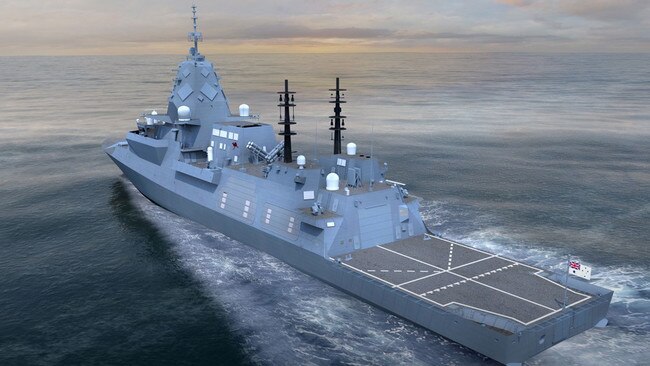A key industry figure says cuts to the $45bn Adelaide frigate construction could risk a ‘valley of death’ situation
Cutting the $45bn Adelaide frigate program to six ships risks another workforce “valley of death”, says a key industry figure.
SA News
Don't miss out on the headlines from SA News. Followed categories will be added to My News.
Cutting the $45bn Adelaide frigate construction from nine ships to six would create another costly workforce “valley of death” and needlessly trim navy’s surface fleet, says a key industry figure.
Australian Industry & Defence Network chief executive officer Brent Clark said six Hunter Class frigates would not meet the federal government’s promise of a continuous naval shipbuilding program in Adelaide.
The long-awaited release of a crucial review into the navy’s surface fleet, expected next week, is likely to result in between six and 16 Hunter Class frigates being built in Adelaide, according to varying speculation.

More than 1800 BAE Systems Australia workers are involved with the Hunter project, centred on Osborne Naval Shipyard, which presently involves building nine ships.
Speculation about the Hunter program’s future has included at least six ships to be built at Osborne, costing between $4.5bn and $5bn each, to a total of 16 – eight using a 96-missile design revealed last November and the other eight to the original 32-missile design.
A surface combatant fleet capability gap before the first Hunter frigate enters service in 2032 is expected to be covered by light corvette-style warships, armed with missiles, to patrol Australia’s northern approaches.
Mr Clark, a former chief of the axed French submarine project, said funding a six-ship build would require a further commitment, sooner rather than later, to build more to meet the promise of a continuous program.
Otherwise, there would be a loss of skilled workers, productivity and efficiency – just as had been experienced in the “valley of death” after the Adelaide air warfare destroyer program wound down in the past decade.

“It’s going to cost you an arm and a leg to ramp it back up again. … The whole point of having the continuous shipbuilding program is to create a drumbeat, so that you can actually produce these ships consistently for a good price and maintain workforce,” Mr Clark said.
Continuous shipbuilding programs in other nations enabled industry to invest with certainty in a stable supply base and created lifelong skilled jobs.
“For South Australia, that’s a tremendous outcome for employment, for the industrial base and for supply chains,” said Mr Clark, also a former navy officer.

Opposition Senate Leader Simon Birmingham accused the Albanese government of creating two years of uncertainty for the Hunter frigate build “with back-to-back reviews and endless delays to decision making”.
“Having talked a big game pre-election, Mr Albanese is letting South Australians down with uncertainty and indecision. There must be a recommitment to the continuous shipbuilding strategy developed by the previous government, which is essential for job-creating defence investment to flow in SA,” he said.

“Ending today’s uncertainty on shipbuilding is also essential for tomorrow’s delivery of AUKUS submarines, which require the full pipeline of investment and jobs to be delivered.”
Asked on Monday morning if anything less than nine Hunter Class frigates would be a failure, Premier Peter Malinauskas said: “I don’t want nine (ships). I don’t want 12 or 15. What I want is a continuous ship build in South Australia forevermore. That’s the promise this (federal) government has made.”





